Recommendations of experts on planting gazania in the open field and caring for it
The cultivation of gazania is becoming more and more popular with gardeners. In the open field, the plant is extremely unpretentious, and even a beginner can handle it. You can look at the flower indefinitely, like pictures in a children's kaleidoscope.
The smooth symmetrical lines on the petals are mesmerizing, it seems that it was not nature that created such a miracle, but an unknown artist applied strokes with a thin brush. If gatsania bushes are located close to each other, it becomes unclear where one flower begins and where another ends.
Exotic chamomile
Even in appearance, it is easy to determine that the flower belongs to the Astrov family. It looks like both a chamomile and a small gerbera, only its bright color makes it clear that gazania (gazania) comes from the African continent. There are few species of this plant, but breeders have bred many varieties and hybrids. On the shelves of flower shops, you can now find flowers not only with one row of petals, but also with two. In recent years, gazania with amazing double inflorescences has become widespread.
Advice: when purchasing such a variety of gatsania for planting, it should be remembered that it does not multiply by seeds. To plant it in flower beds every year, you will have to do grafting. In addition, she will require more careful personal care.
Gazania is a lover of direct sunlight. Its glossy, juicy, small leaves are covered with the smallest grayish fibers that can retain heat. For fans of growing compositions, the flower will serve as a fertile material: the palette of colors of blossoming buds is varied, from matte to flashy bright.
The places of future flower beds should be flooded with sunlight, even the slightest shading is unacceptable. Strong winds are not capable of damaging the plant, as some varieties lack a stem. But with a certain crowding of planting, drafts can contribute to the occurrence of putrefactive processes. Unusual chamomile always closes its inflorescences:
- after the Sunset;
- before the rain, when the sky is overcast;
- even on a hot afternoon if the clouds are low.
On the African continent, there are rather cold nights, so gazania calmly tolerates a decrease in temperature to 8 ° C. It is also undemanding to the composition of the earth - it grows even on clay soils. But if you approach the care of the plant with all seriousness, then it is better to choose the following soil for it:
- River sand.
- Humus.
- Turf.
- The land is leafy.
The area where flowers are planned to be planted should not be flooded by groundwater. The root system of gatsania is pivotal; when even a small area decays, the root dies, and then the whole plant. If possible, fine sand should be added to clay soil. Soil PH should shift towards a weakly basic reading (around 5-6).
Where to start landing?
Shops start selling gazania seedlings in the spring. But experienced gardeners prefer to grow the plant on their own and not spend extra money. This is reasonable, since it is not always possible to find a favorite variety on sale. You can propagate a flower in the following ways:
- Seeds. The optimal method for planting a variety of seedlings of various colors in flower beds.
- Cuttings. The method is good if you need to preserve the uniqueness of the flower.
For propagation of gatsania, seeds take no more than a two-year shelf life. Planting boxes should be well rinsed, scalded and filled with loose soil to two-thirds of the volume.On the surface of the earth, shallow parallel grooves are drawn and seeds are planted every 3 cm using tweezers. Slightly pressing the seeds into the soil, moisten the soil with a spray bottle, cover the boxes with glass and leave in a warm (22 ° C) place.
Tip: in order for the flower to bloom immediately after planting in flower beds, planting seeds is carried out in early March. For the southern regions, sowing directly to the beds in May is possible, but flowering will come much later.
In a week, the first sprout will break through, you can not wait for the appearance of others, but remove the glass and transfer the boxes to a cooler place. It is now important to care for using fluorescent lamps. In spring daylight hours are too short to get full seedlingstherefore it is important to highlight the seedlings. The soil should be constantly moist, but not flooded - the roots of gatsania are still too tender.
Tip: Forward-thinking gardeners sow directly in peat pots... This will allow planting seedlings in flower beds without the risk of damaging the root system.
In another two weeks, the sprouts will grow on a pair of leaves - it's time to dive into separate seed containers. If you plan to grow in flowerpots, then it is rational to plant there immediately. Seedlings dive 10-15 cm apart from each other with great care, the roots must remain intact. With the onset of stable warm weather, the seedlings are subjected to preventive hardening. Constantly increasing the interval of being in the open air, containers with plants are taken out into the street.
For grafting, it is necessary to take care of the wintering of an adult gatsaniya. A flower dug up in the fall is stored at 12-16 ° C on a closed loggia or veranda. In early April, cuttings about 8-10 cm long are cut at an acute angle, dried and treated with any growth stimulant. Then they are immersed in the ground, covered with foil or glass. The main thing in caring for a seedling:
- Sparing soil moisture.
- Daily airing.
- Removing condensate drops from the walls of the greenhouse.
When the forecasters firmly promised that there would be no frosts, they began to plant stronger seedlings on the flower beds. They dig up the earth well, get rid of debris, and, if necessary, bring in sand. The optimal distance for holes is 25-30 cm. You should not forget about fragile roots, so you can use the transshipment method. Everything is ready for further care.
Several recommendations for care
Good outdoor gazania care always starts with proper watering. Despite the fact that the plant often grows in deserts, it likes abundant watering. Water treatments are best done when the sun has disappeared over the horizon. First you need to make sure that the topsoil has dried out to 5-7 cm depth. Watered at the root with a hose, trying to avoid getting water drops on leaves and flowers.
Tip: gating is great for those gardeners who do not have the opportunity to water every day.
When planting a flower on poor soils, you should take care of regular fertilization. Complex fertilizers will be most suitable. The first feeding is carried out two weeks after planting. Further care involves the application of fertilizers at ten-day intervals.
Tip: if the flower is grown in pots, the plant should be fed every two weeks.
A prerequisite for proper care is regular weeding and loosening for better air permeability of the earthen coma. Experienced gardeners place a small layer of rubble or pine bark directly on the flower beds. This layer collects heat from the sun and prevents moisture from evaporating. Regularly removing dry buds will stimulate more abundant flowering.
The seeds are quite large and volatile. At the slightest breeze, you can lose your precious harvest. In order not to spend the night by the flower bed, waiting for the fruit with seeds to ripen, the growers go to the trick.They put a dense gauze bag on the fetus, a kind of net for catching.
Gazania is quite resistant to damage from diseases and pests. Sometimes snails raid the beds to feast on juicy leaves. Experts do not recommend poisoning snails with insecticides, as they are beneficial - they rid the plant of rotten parts. A little gravel should be scattered around the flowers. What else is dangerous:
- Aphids sucking juices from the stem. It is worth getting ladybirds on the site that feed on aphids.
- Spider mite. Modern insecticides will help to combat it.
- "Blackleg". It affects seedlings if there was improper watering. Fungicidal drugs cope with the spread of the disease only at an early stage.
Increasingly, gazania can be seen on gardeners' sites. Caring for her is so simple that many of them grow the plant as annuals. For spring planting in open ground, only a few of the most beautiful specimens are left to winter. Owners of rare varieties dig up all the flowers and store them in specially equipped rooms.
It's boring without her in the flowerbed. Together with delicate roses, bright exotic chamomile flowers create the effect of a tropical garden. Before the onset of the autumn cold, the unusual plant dissolves the buds, makes the impending blues recede. Gazania is an excellent remedy for depression.
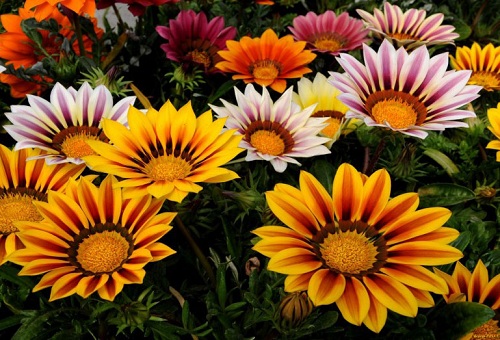
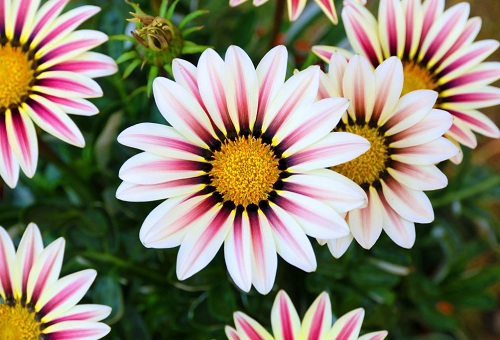
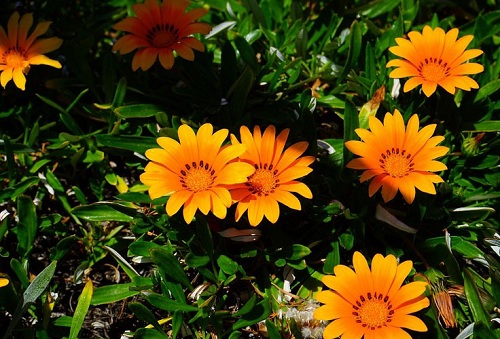
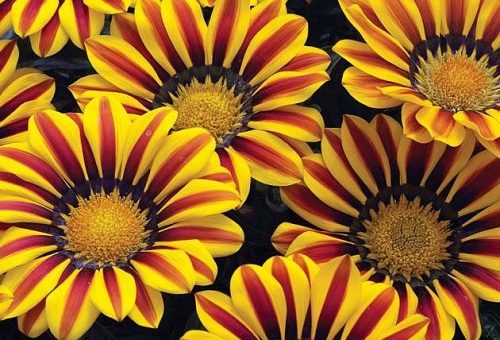

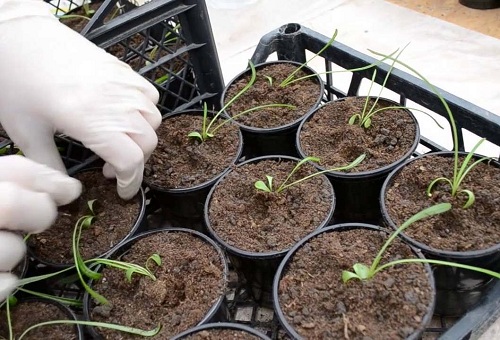
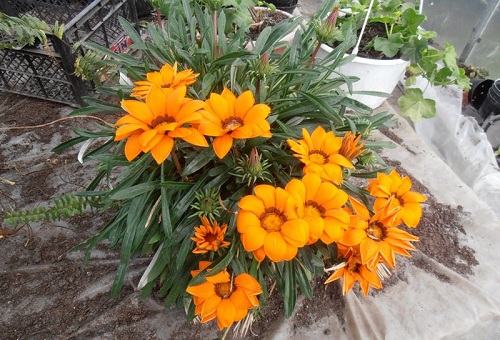
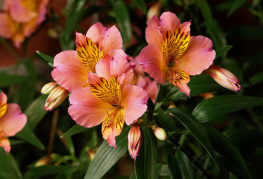
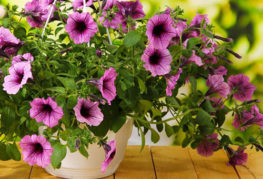
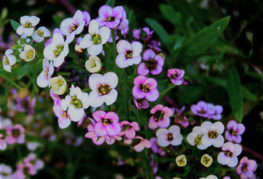
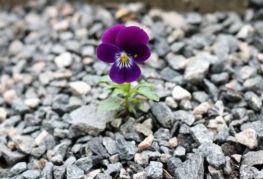
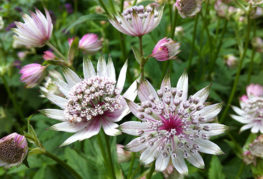
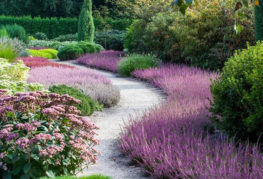
and will be published shortly.